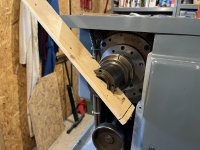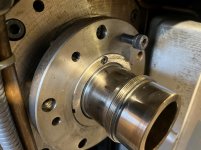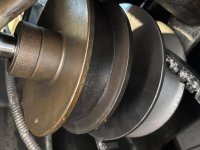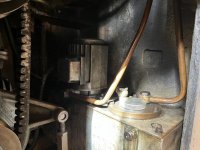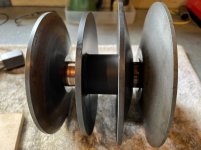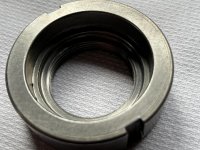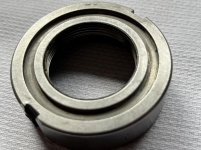Having followed other forums around the 'Schaublin Slime' issue I wanted to document this part of the process to get to the route of the oil leak issues and the fix too.
Schaublin themselves have obviously during the course of the 135 production and suspect also with other similar models been continuously modifying the set up in terms of oil leak mitigation and one item early on in the dis-assembly process shows this point - spindle oil weep collector.
Here is an early example, small capture fixture with copper pipe which empties oil into the gear change housing and subsequently into the return feed to tank reservoir - note no drip tray installed.
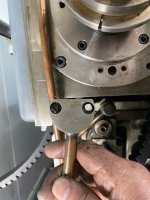
My version (late 1970 build) changed design on the capture fixture which also includes a drip tray which extends under the spindle housing, oil expelled into the same change gear location.


Latest version I have seen pictures of with the same drip tray as the version above.
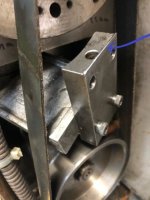
My machine has the collet changer fitted so have removed the actuator but will show the process to remove the various parts to allow access to the top spindle pulley for access to change the main belt next.
Schaublin themselves have obviously during the course of the 135 production and suspect also with other similar models been continuously modifying the set up in terms of oil leak mitigation and one item early on in the dis-assembly process shows this point - spindle oil weep collector.
Here is an early example, small capture fixture with copper pipe which empties oil into the gear change housing and subsequently into the return feed to tank reservoir - note no drip tray installed.

My version (late 1970 build) changed design on the capture fixture which also includes a drip tray which extends under the spindle housing, oil expelled into the same change gear location.


Latest version I have seen pictures of with the same drip tray as the version above.

My machine has the collet changer fitted so have removed the actuator but will show the process to remove the various parts to allow access to the top spindle pulley for access to change the main belt next.


